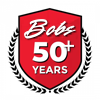Inflation Reduction Act
![]() Home | Inflation Reduction Act
Home | Inflation Reduction Act
Inflation Reduction Act Information (Minnesota)
Here’s why Winona, MN property owners should care about the Inflation Reduction Act for 2025
It’s an Opportunity.
It provides tax credits and rebates to encourage Minnesota homeowners to replace older appliances with high-efficiency equipment that does a better job at a lower operating cost.
How to Take Advantage of the Inflation Reduction Act
Bob’s Home Heating & Cooling, LLC can help pinpoint areas in your home or business where you can save money and reduce your carbon footprint, allowing you to use the best tax credits and rebates.
HVAC Tax Credits Homeowners Can Claim
Projects installed between 2025 and 2032 quality for a 30 percent tax credit:
- AIR CONDITIONERS—Tax credit capped at $600
- HEAT PUMPS—Tax credit capped at $2,000
- FURNACES & BOILERS—Tax credit capped at $600
- GEOTHERMAL SYSTEMS—Uncapped 30 percent tax credit on purchase and installation
- SOLAR PANELING—Uncapped 30 percent tax credit on purchase and installation
The Inflation Reduction Act extends and expands the existing Energy Efficient Home Improvement Credit (Section 25C) and the Residential Clean Energy Credit (Section 25D) to homeowners.

- All ducted air-source heat pumps with the ENERGY STAR® label qualify.
- Split air conditioner systems must have a Seasonal Energy Efficiency Rating 2 (SEER2) of 16 or more. All packaged systems with ENERGY STAR certification are eligible.
- Gas furnaces must have an annual fuel utilization efficiency (AFUE) rating of at least 97 percent.
- Gas boilers with an AFUE of at least 95 percent qualify.
- Oil-fueled boilers and furnaces must be capable of using fuel blends.
HVAC Rebates
Schedule your upcoming air conditioning installation with Bobs Home Heating & Cooling, LLC.
The Inflation Reduction Act set aside a $4.3 billion budget, with the money allocated to individual states for disbursement. Funding will vary from state to state, and eligibility is income based.
For example, the High-Efficiency Electric Home Rebate Act (HEEHRA) covers 100 percent of electrification project costs (up to $14,000) for low-income households and 50 percent of costs (up to $14,000) for moderate-income households.
Here’s how some of those rebates would work:
- $8,000 for a heat pump for space heating
- $4,000 for an upgraded breaker box
- $2,500 for upgraded electric wiring
- $1,750 for a heat pump water heater
- $1,600 for insulation, air sealing, and ventilation
- $840 for an electric stove, cooktop range, or oven
- $840 for an electric clothes dryer
The rebate program is not available to all households. Because the funds are being allocated to state offices, and each state gets to decide to a certain degree how to distribute the money, it will take some time to implement the rebate program. Nor are the rebates retroactive to 2022.
The tax credits, in contrast, are in place right now and will continue to be for the next decade.
Up-front costs are typically the biggest obstacle to upgrading your heating and cooling system. The Inflation Reduction Act overcomes that barrier. Call Bob’s Home Heating & Cooling, LLC today or request service online to learn more about how to save money.
iNDOOR aIR Quality

Heating Services

Heat PUMPS

Air Conditioning


